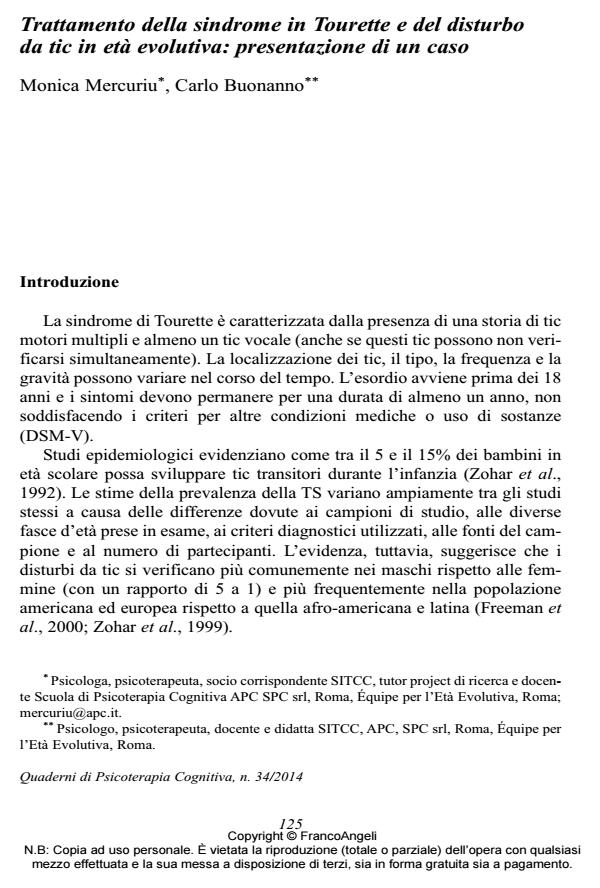Trattamento della sindrome in Tourette e del disturbo da tic in età evolutiva: presentazione di un caso
Titolo Rivista QUADERNI DI PSICOTERAPIA COGNITIVA
Autori/Curatori Monica Mercuriu, Carlo Buonanno
Anno di pubblicazione 2014 Fascicolo 2014/34
Lingua Italiano Numero pagine 17 P. 125-141 Dimensione file 113 KB
DOI 10.3280/QPC2014-034009
Il DOI è il codice a barre della proprietà intellettuale: per saperne di più
clicca qui
Qui sotto puoi vedere in anteprima la prima pagina di questo articolo.
Se questo articolo ti interessa, lo puoi acquistare (e scaricare in formato pdf) seguendo le facili indicazioni per acquistare il download credit. Acquista Download Credits per scaricare questo Articolo in formato PDF

FrancoAngeli è membro della Publishers International Linking Association, Inc (PILA)associazione indipendente e non profit per facilitare (attraverso i servizi tecnologici implementati da CrossRef.org) l’accesso degli studiosi ai contenuti digitali nelle pubblicazioni professionali e scientifiche
I disturbi da tic e la sindrome di Tourette vengono classificati nel DSM-V come disturbi ad esordio infantile-adolescenziale. Essi compaiono tipicamente tra i 5 ed i 6 anni, e prima dei 18 anni, e sono caratterizzati dalla presenza di tic, movimenti corporei rapidi, ricorrenti, non ritmici o vocalizzi, che si manifestano in maniera non costante per intensità, frequenza e durata. La sindrome di Tourette, che fa parte dei disturbi da tic, è caratterizzata dalla combinazione di tic motori (della durata superiore ad un anno) e tic vocali. È presente un’elevata comorbilità con il disturbo ossessivo-compulsivo e con il DDAI (disturbo da deficit d’attenzione con iperattività), condizioni che possono precedere o comparire in seguito alla manifestazione dei tic nel bambino. Tali disturbi hanno una risonanza notevole nella qualità di vita dei bambini che ne sono affetti, influenzandone negativamente lo sviluppo affettivo e relazionale. Solo una bassa percentuale di questi casi giunge al trattamento ed una buona parte non viene correttamente diagnosticata. Nel presente articolo verrà illustrato il trattamento di un paziente di 10 anni affetto da sindrome di Tourette, discusse le strategie d’intervento, le tecniche utilizzate ed i fattori di mantenimento del disturbo.
Parole chiave:Sindrome di Tourette; disturbo cronico da tic; habitreversal training; disturbo ossessivo compulsivo.
Monica Mercuriu, Carlo Buonanno, Trattamento della sindrome in Tourette e del disturbo da tic in età evolutiva: presentazione di un caso in "QUADERNI DI PSICOTERAPIA COGNITIVA" 34/2014, pp 125-141, DOI: 10.3280/QPC2014-034009